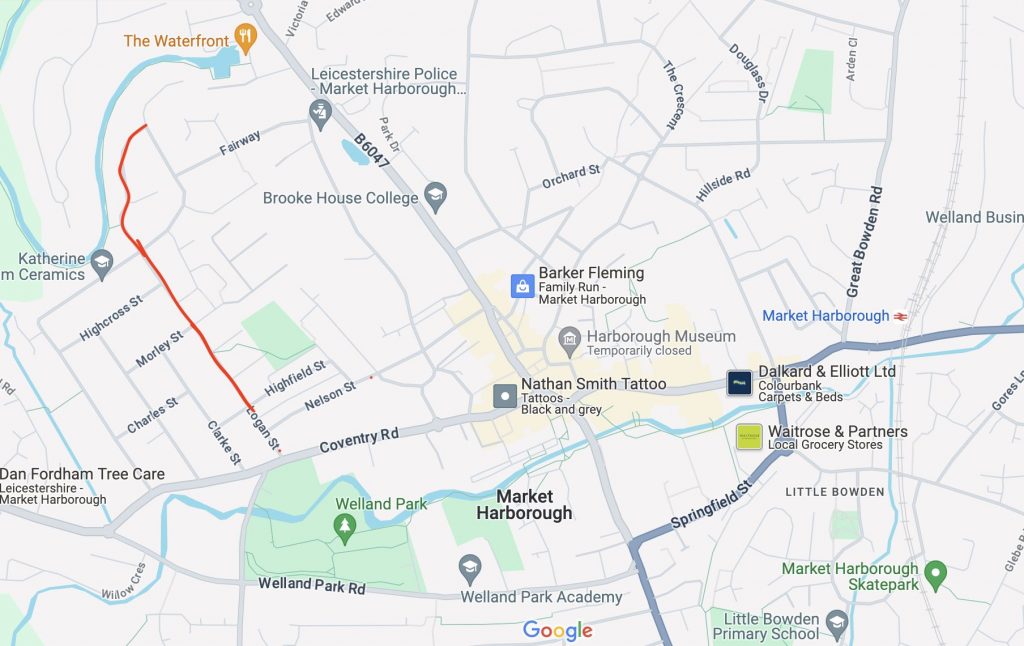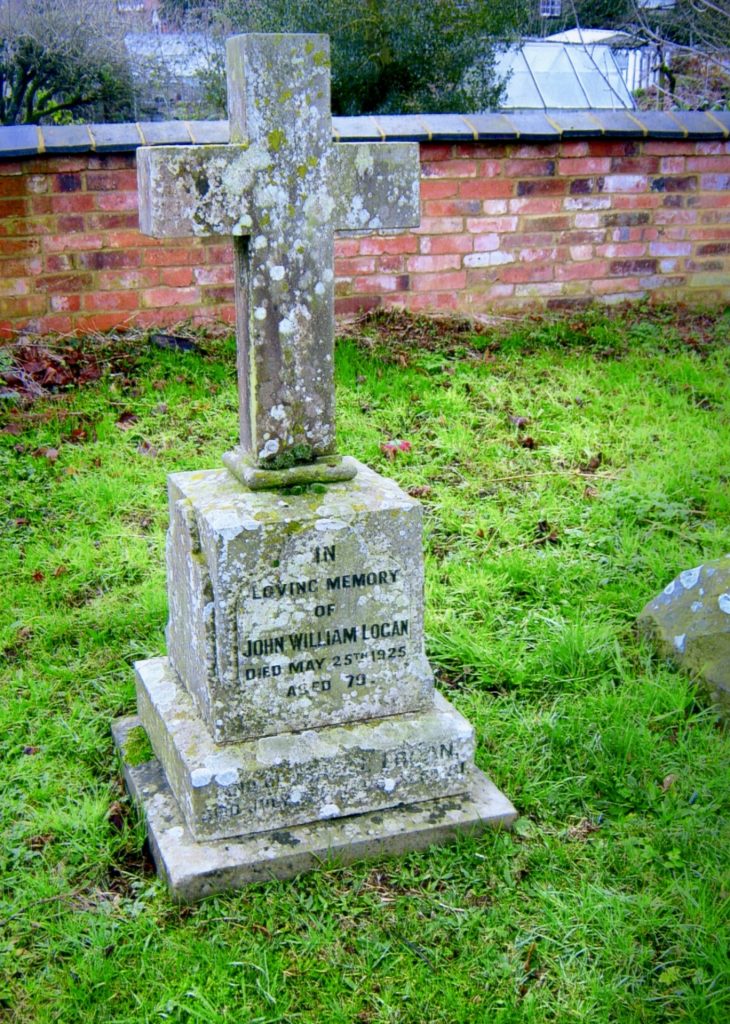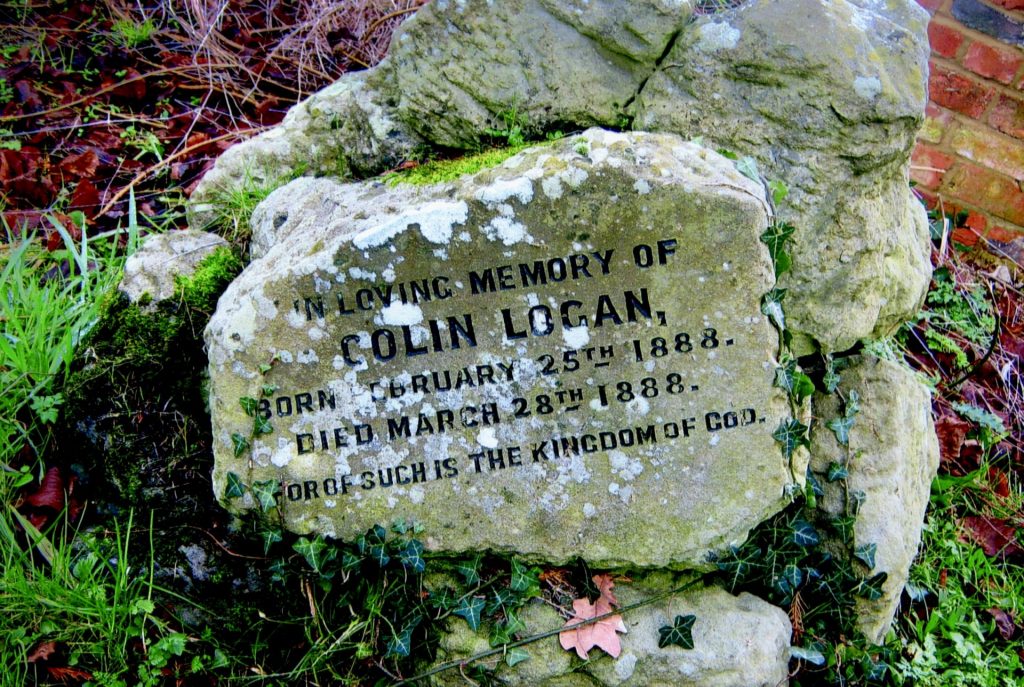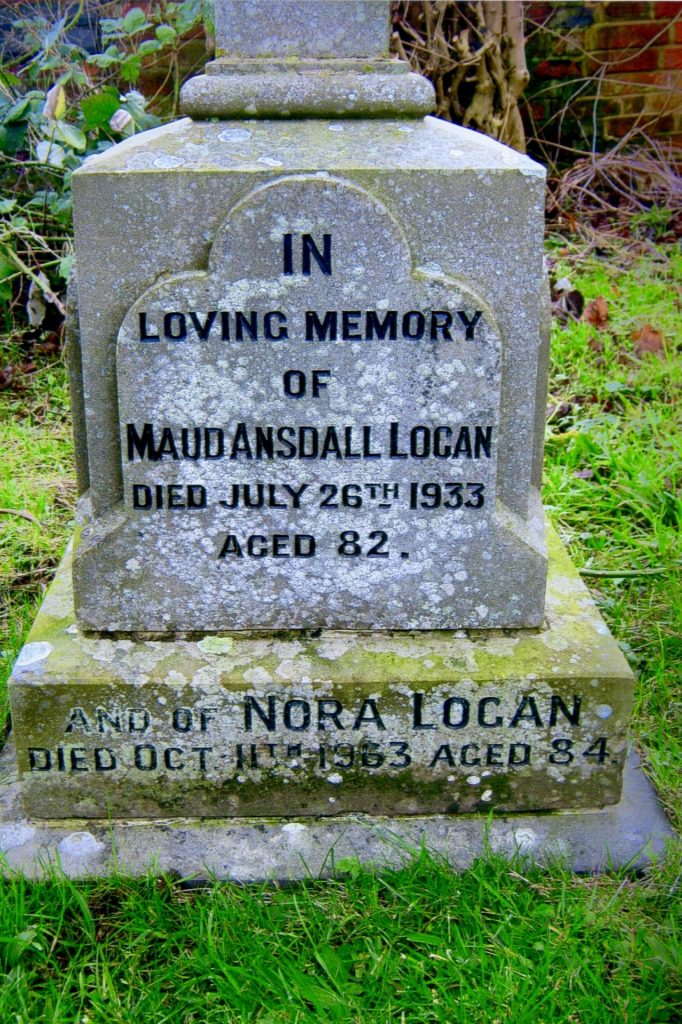What’s in a street name?

It is not unusual for a street to be named after prominent members of the community. For instance, Market Harborough has several of these thoroughfares and one example of this is Logan Street off Coventry Road.
A book was loaned to me recently entitled ‘Contemporary Biographies’ from Leicestershire and Rutland at the opening of the twentieth century and it lists many professional people and local dignitaries. In amongst those featured was a John William Logan and I was intrigued to discover more about him and his family.

John William Logan was the son of John Logan (1816-1873) and Elizabeth Sarah, nee Townsend (1821-1856). He married in 1874, Maud Mary Ansdall, nee Watkins (1851-1933) who was the daughter of the Reverend B.E. Watkins and they had nine children:
- Isabel Logan 1875-1956
- Buried with her father
- May Logan 1876-1930
- Ida Logan 1877-1964
- Nora Logan 1879-1963
- Buried with her mother
- Janet Logan 1880-1973
- Ruth Logan 1882-1965
- John Montague Logan 1883-1942
- Hugh Logan 1885-1919
- Colin Logan 1888-1888

Buried in a grave behind his parents, John William Logan (1845-1925), known as ‘Paddy’ Logan, was a civil engineering contractor and Liberal Member of Parliament for Harborough in Leicestershire. He lived with his family at East Langton Grange where he gave the village a cricket ground and a hall. He also maintained a cottage home for the children of men killed on his works.
He suffered from poor health following a hunting accident and he resigned as an MP on two occasions. Logan had won Harborough from the Tories at a by-election on 8th May 1891 and held it until his resignation on 1st June 1904. He returned at the second General Election of 1910, only to resign again six years later.
His political career was devoted to improving the lot of agricultural labourers and it was in their interests that he had agreed to stand for parliament on the second occasion, but the strain proved too much, forcing him to retire permanently from public life. During his election campaigns he was often denied the use of public halls and held his meetings under canvas in what he called the ‘Free speech tent’. He was appointed as both Steward of the Manor of Northstead in 1904 and Steward of the Chiltern Hundreds in 1916, as a means of resigning from the House of Commons.
John William Logan was a prominent sportsman and one of the founding fathers of the British racing pigeon fanciers, writing ‘Logan’s Pigeon Racers Handbook’. He was president of Leicestershire County Cricket Club and his son Hugh played a single first-class cricket match for Leicestershire.
On his death in 1925 John William Logan was buried in Church Langton churchyard and a white marble cross marks his grave. He had lived for 50 years in East Langton. Logan Street and the electoral ward of ‘Market Harborough Logan’ in Harborough District are named in his honour. His wife Maud was also laid to rest in a grave next to her husband in 1933. Their memorials are identical.

John and Maud’s son Hugh was born on 10th May 1885 at East Langton Grange. He served in WWI with the Leicestershire Yeomanry holding the rank of Lieutenant. He died following the Armistice at Tournai, Hainaut, Belgium on 24th February 1919.
His brother-in-law was Sir William Lindsay Everard, who also played first class cricket for Leicestershire. Hugh’s wife was Phyllis Everard. Sir William (1891-1949) was a brewer, politician and philanthropist from Leicestershire. As the founder and supported of the Ratcliffe Aerodrome, he was a pioneer aviator and knighted for his crucial efforts in WWII with the Air Transport Auxiliary. He controlled Everards Brewery for nearly 25 years and was an MP.
His daughter Bettyne married Denis Butler, 9th Earl of Lanesborough from Swithland Hall, Leicestershire.
It’s amazing how much history can be discovered hidden behind a simple street name and I wonder how many people who live in Logan Street today are aware of its origin.
Glyn Hatfield




 Kibworth Carnival
Kibworth Carnival

